A Child’s Machiavelli (1995 - 1998/2012/2019/2023) Expanded.Art, Berlin
2023 Installation curated by Anika Meier
Illustrated faux children’s book
Series of 31 small oil paintings
Series of variable gouache paintings on paper, English, French and German E-book using Flash animations
Augmented-reality wallpaper
24 animated NFT
A Child’s Machiavelli, was re-published by Beatrice Books, redesignedby its publisher Patrick Reynolds. A Child’s Machiavelli was initially written and illustrated by Hart in 1995, inspired by Niccolo Machiavelli’s Renaissance treatise, The Prince, the first book of political philosophy. Hart’s version began as a series of oil paintings and small catalog, produced by the Realismus Studio, at the Neue Gesellschaft für Bildende Kunst, Berlin in 1995.
Hart initially wrote and illustrated A Child’s Machiavelli (1994-1995) when she lived in Berlin in the late nineties, after seeing Art Spiegelman’s Maus in a bookstore. Her version of Machiavelli was inspired by Niccolo Machiavelli’s, specifically his treatise from the Italian Renaissance and long considered the first book of political philosophy. Hart’s version started as a series of paintings and drawings resulting in a small catalog that I called A Child's Machiavelli. It was exhibited at the Künstlerhaus Am Acker, and produced by the Realismus Studio, Neue Gesellschaft für Bildende Kunst, Berlin, in 1995. The catalog was eventually released as an expanded hardcover by Penguin USA in 1998, along with German and French editions. At that time, drawings were also collected by the Albertina Museum in Vienna
Hart’s intention with her Child’s interpretation of the 1532 Machiavelli was to keep to the meaning of the original, but to reflect the values and voice of the youth culture of her time. She transformed The Prince – intended to advise a young king on the ways of power – into a primer teaching bad manners and street smarts to small children. Hart’s version has proven prescient, prefiguring the infantile brutality of current US politics. In 2019, Beatrice Books, a small experimental publisher, reissued the book in a more contemporary edition with a new design in 2019. At that time, Hart discovered among her files a series of Flash animations created for an e-book, the early 21st-century digital format that has long since disappeared along with Flicker Labs, the production company that half-produced her e-book from her original gouache paintings in 2010. Then again, in a third re-conception of A Child’s Machiavelli, but this time at the height of the crypto bubble, Hart decided that her technological castaways with their condemnation of power structures and institutions, would make perfect reflexive NFT, using the structure to critique itself. She produced them in 2023 on the Expanded.Art NFT platform, using a new Adobe product called Animate, that allowed her to finally reopen her old Flash files. With that final transformation, what has ultimately emerged were cruel but true insights, standing as reminders that while technologies may come and go, although human frailties manage to remain always the same.
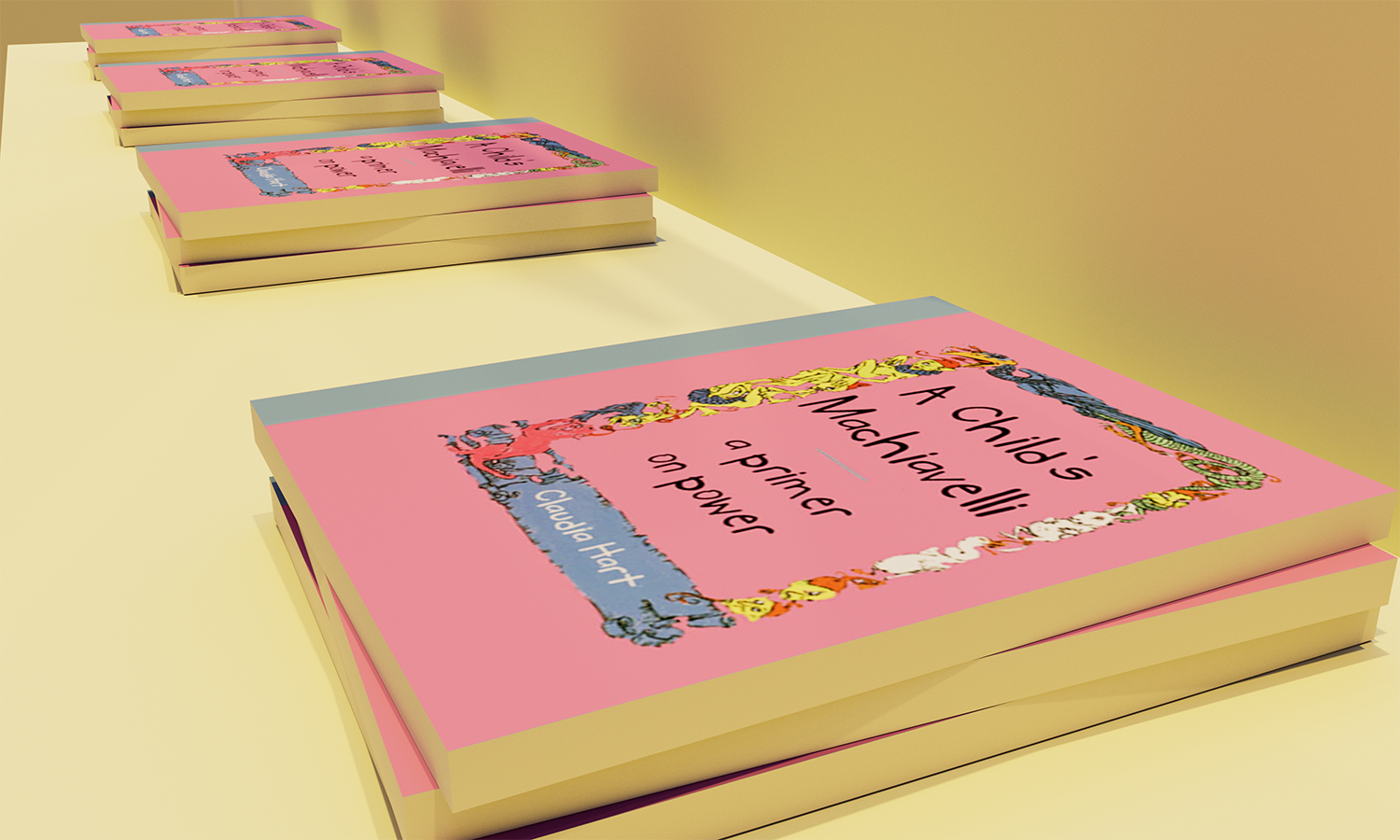
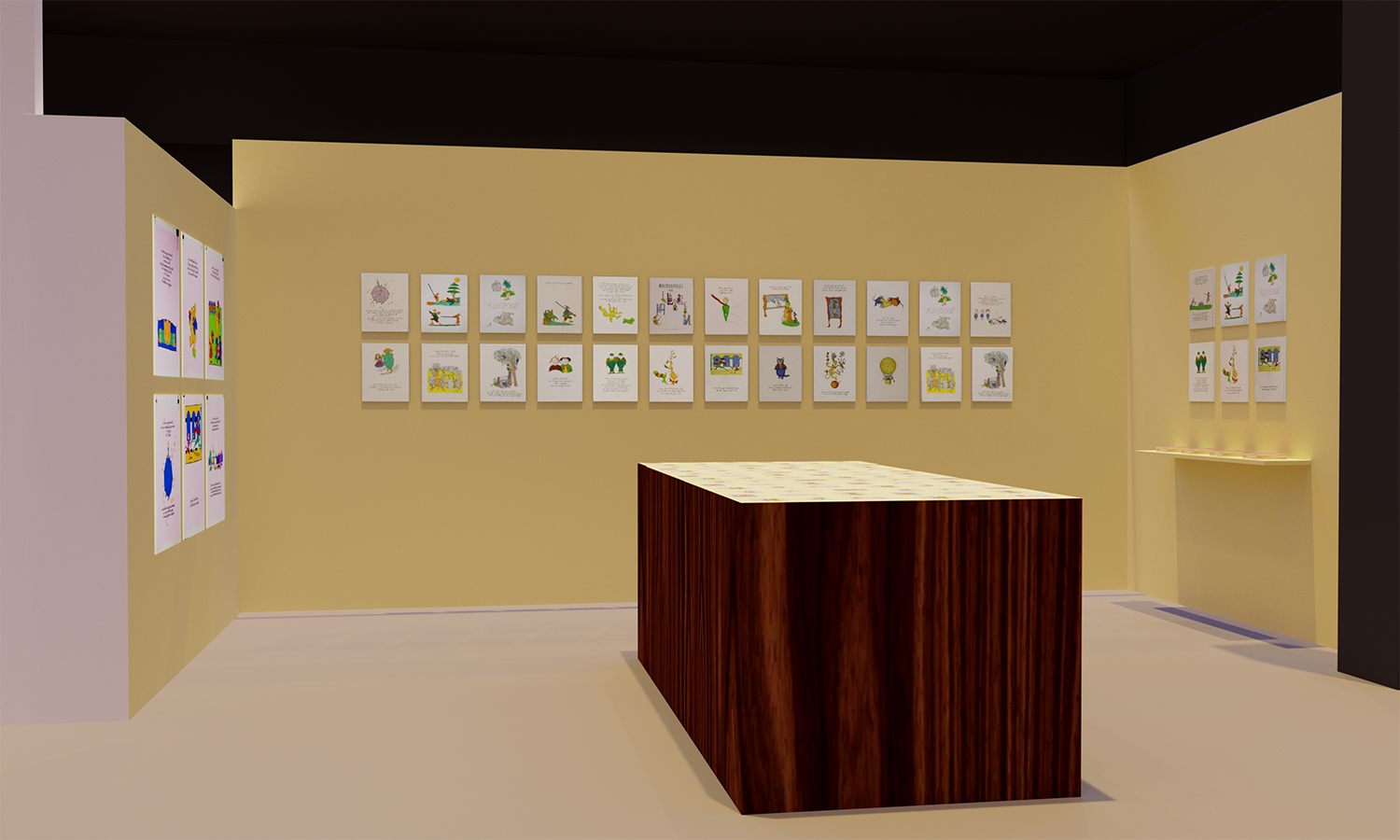

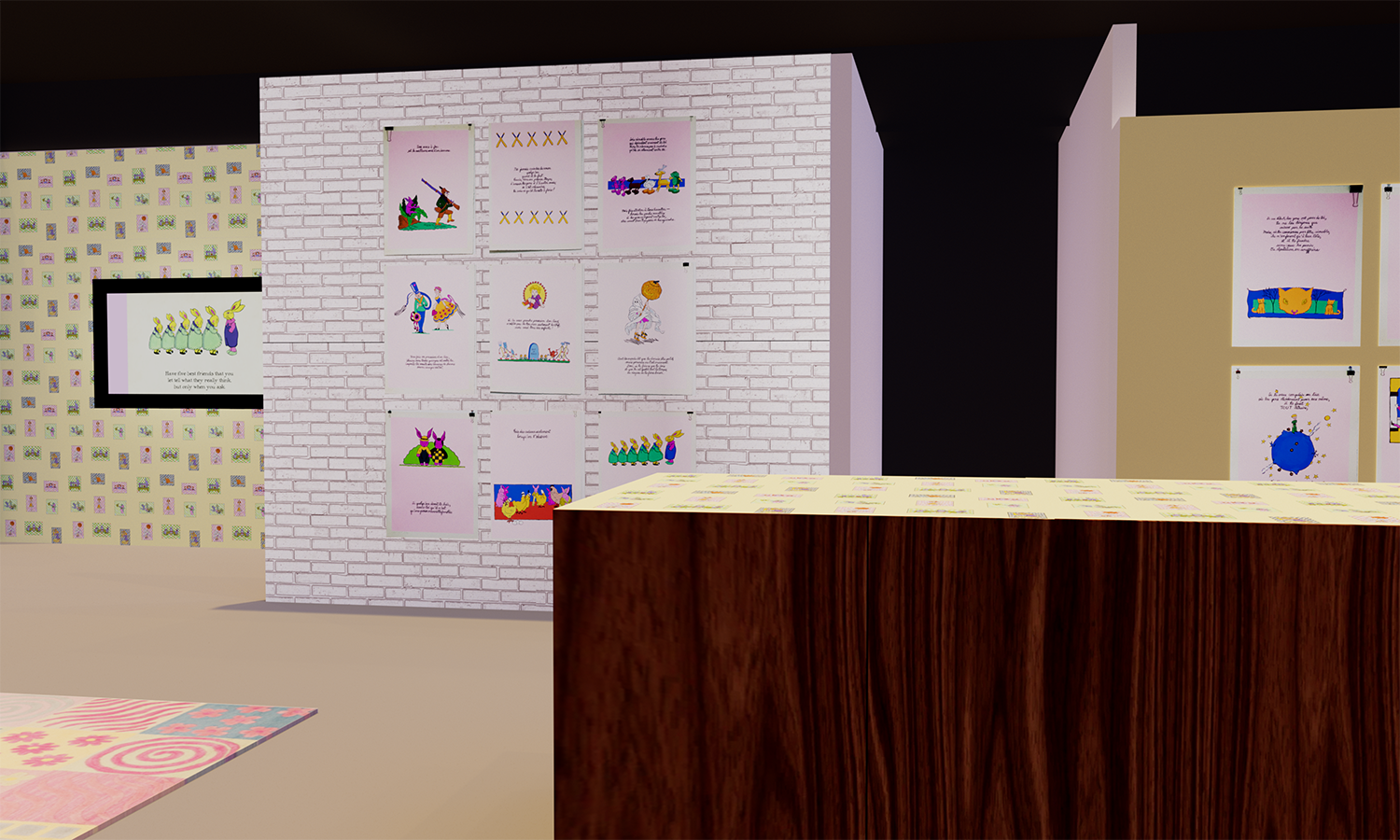
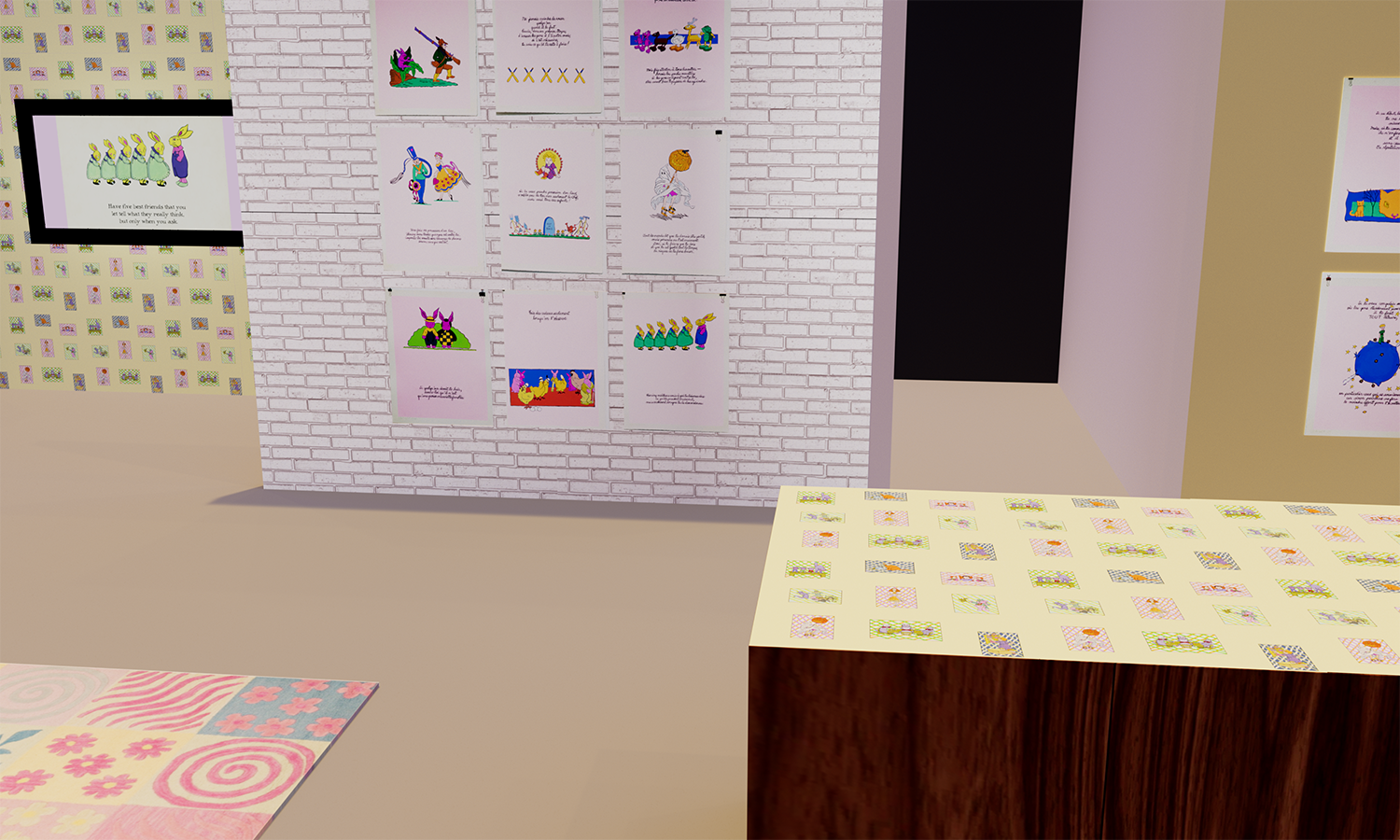
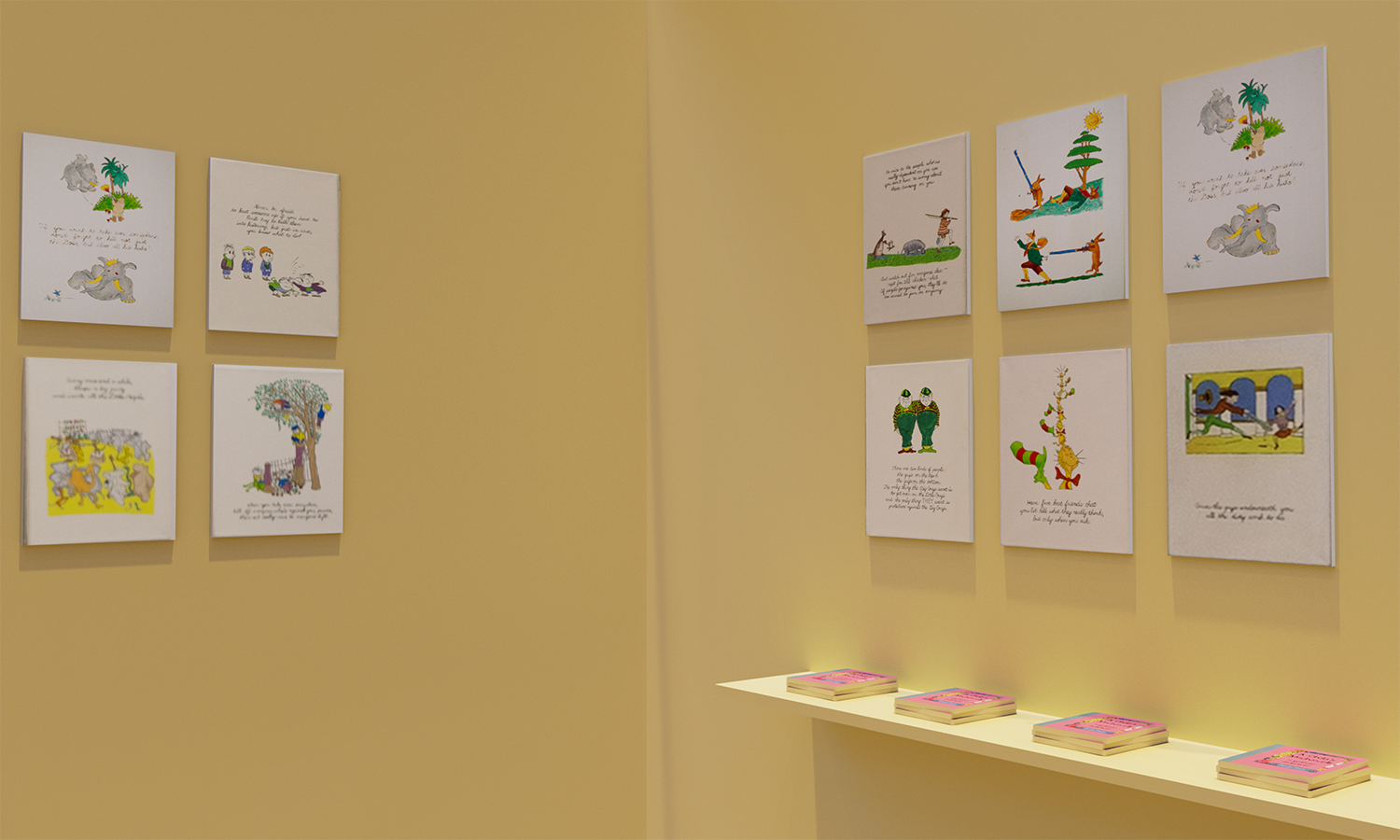
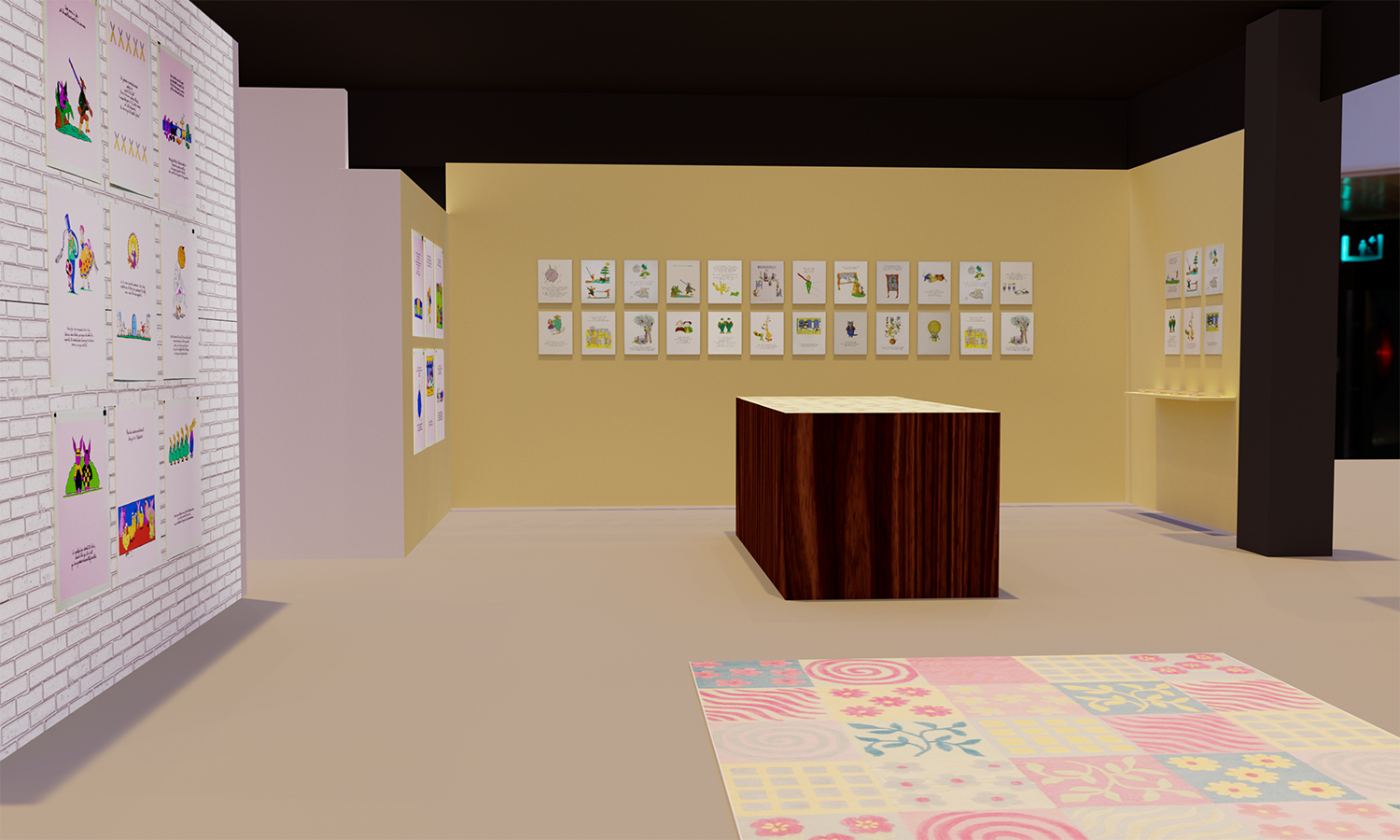



Claudia Hart, 3D visualizations of the exhibit A Child’s Machiavelli: Works from the Nineties, Expanded.art, Berlin, Germany, including A Child’s Machiavelli NFT animations,1995/2022; augmented-reality A Child’s Machiavelli wallpaper, 2023; A Child’s Machiavelli augmented reality rug (appropriated tufted wool rug, 8 x 10 feet) 2023; signed first-edition A Childs Machiavelli books, 1998 (in a custom hand-made linen folio); Thirty-one A Childs Machiavelli 16 inch x 12 inch gouache drawings on rag paper,1995; Sixteen 30 inch x 21.5 inch acrylic + chalk drawings on rag paper, 1998.